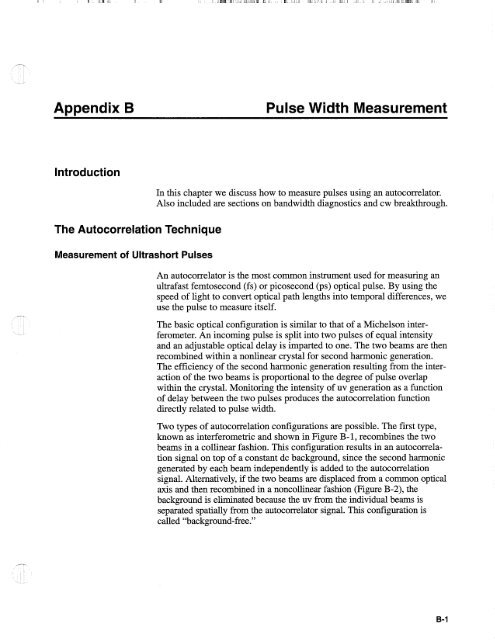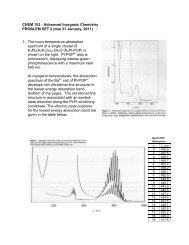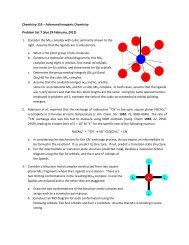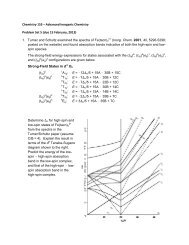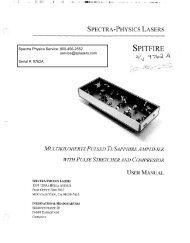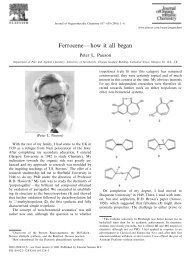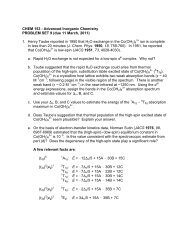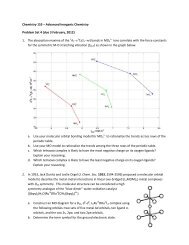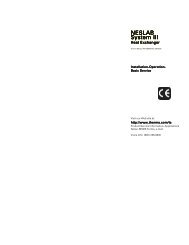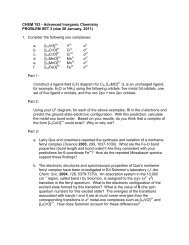Tsunami - Beckman Institute Laser Resource Center
Tsunami - Beckman Institute Laser Resource Center
Tsunami - Beckman Institute Laser Resource Center
You also want an ePaper? Increase the reach of your titles
YUMPU automatically turns print PDFs into web optimized ePapers that Google loves.
Appendix B<br />
Pulse Width Measurement<br />
Introduction<br />
The Autocorrelation Technique<br />
Measurement of Ultrashort Pulses<br />
In this chapter we discuss how to measure pulses using an autocorrelator.<br />
Also included are sections on bandwidth diagnostics and cw breakthrough.<br />
An autocorrelator is the most common instrument used for measuring an<br />
ultrafast femtosecond (fs) or picosecond (ps) optical pulse. By using the<br />
speed of light to convert optical path lengths into temporal differences, we<br />
use the pulse to measure itself.<br />
The basic optical configuration is similar to that of a Michelson interferometer.<br />
An incoming pulse is split into two pulses of equal intensity<br />
and an adjustable optical delay is imparted to one. The two beams are then<br />
recombined within a nonlinear crystal for second harmonic generation.<br />
The efficiency of the second harmonic generation resulting from the interaction<br />
of the two beams is proportional to the degree of pulse overlap<br />
within the crystal. Monitoring the intensity of uv generation as a function<br />
of delay between the two pulses produces the autocorrelation function<br />
directly related to pulse width.<br />
Two types of autocorrelation configurations are possible. The first type,<br />
known as interferometric and shown in Figure B-1, recombines the two<br />
beams in a collinear fashion. This configuration results in an autocorrelation<br />
signal on top of a constant dc background, since the second harmonic<br />
generated by each beam independently is added to the autocorrelation<br />
signal. Alternatively, if the two beams are displaced fiom a common optical<br />
axis and then recombined in a noncollinear fashion (Figure B-2), the<br />
background is eliminated because the uv from the individual beams is<br />
separated spatially from the autocorrelator signal. This configuration is<br />
called "background-free."


